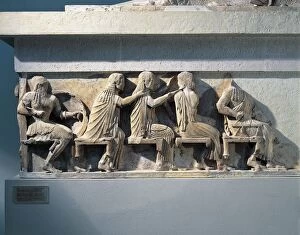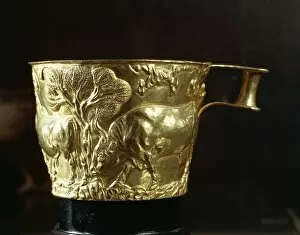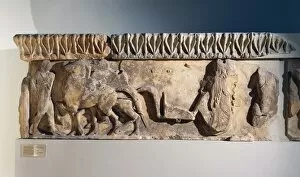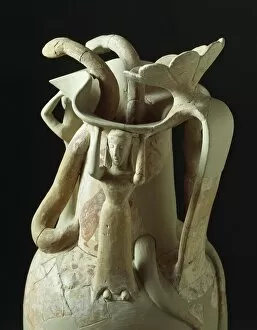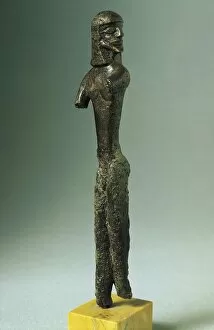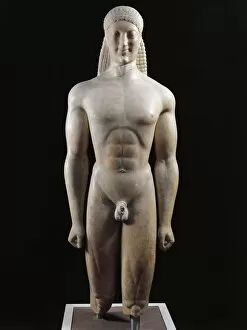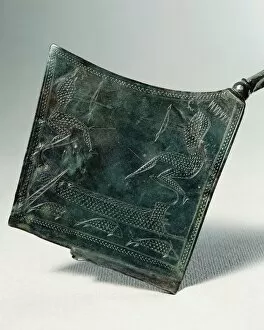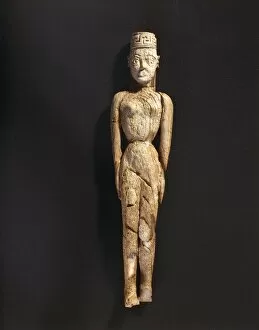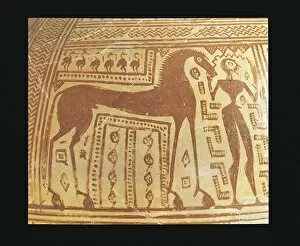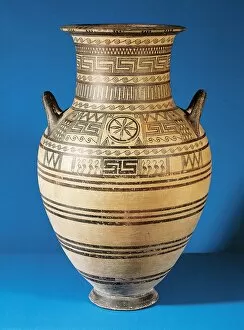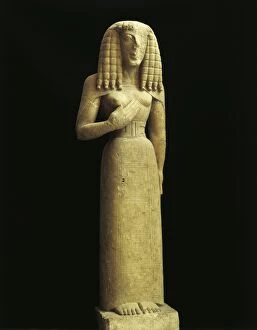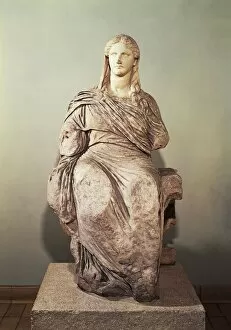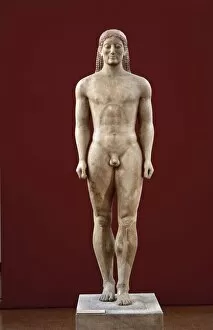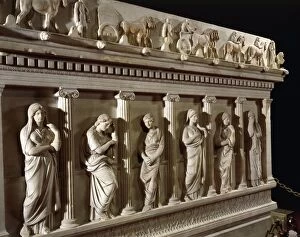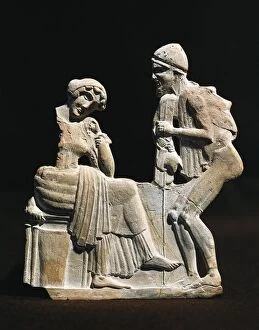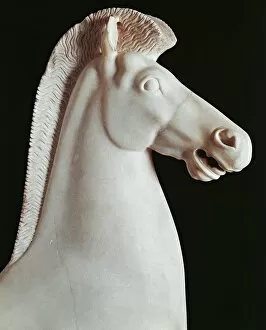Aegean Civilization Collection (#2)
The Aegean Civilization, known for its rich history and cultural heritage, comes to life through various captivating artifacts and archaeological sites
For sale as Licensed Images
Choose your image, Select your licence and Download the media
The Aegean Civilization, known for its rich history and cultural heritage, comes to life through various captivating artifacts and archaeological sites. In one mesmerizing votive marble relief, the mighty God Asclepius stands accompanied by his children before a family of devoted followers. This intricate artwork showcases the deep reverence and devotion that characterized ancient Greek civilization. Moving on to Pleuron near Missolonghi in Greece, we encounter an ancient theater that once echoed with the voices of talented performers. This site serves as a testament to the greatness of Greek civilization and their love for theatrical arts. Delos Island presents us with a breathtaking view of its archaeological area, recognized as a UNESCO World Heritage Site since 1990. The remnants found here offer glimpses into the lives led by those who inhabited this island during ancient times. Aegina Island boasts the majestic Temple of Apollo from the 6th century BC. Its grandeur exemplifies Greek architectural brilliance while serving as a reminder of their religious practices and beliefs. In "The Burning of Troy, " an oil painting on copper dating back to around 1604, we witness scenes from one of mythology's most famous tales. This artwork transports us back in time, allowing us to immerse ourselves in epic battles fought by legendary heroes. Daily life scenes come alive through terracotta figurines discovered in Tanagra. These delicate creations provide insights into everyday activities and fashion trends prevalent during that era. Douris' Kylix depicts youth gathered near an altar in stunning detail on pottery from the 6th century BC. It captures moments frozen in time—a glimpse into rituals performed by young Greeks paying homage to their gods. Skopas' Warrior head takes us closer to Athena Alea Temple at Tegea; it is a masterpiece sculpted between 340-420BC. The intricacies carved onto stone reveal both artistic skill and reverence towards warriors who defended their land with valor.

